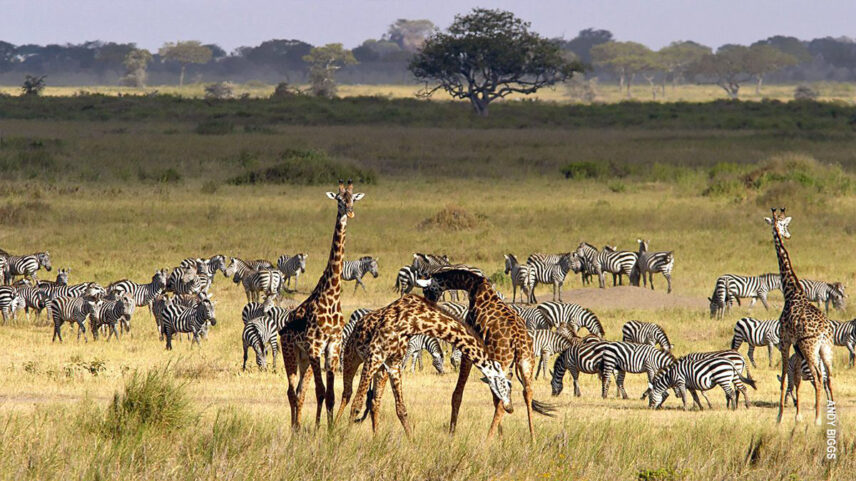Why choose to go on safari in Tanzania? There are 4 million reasons!
Seriously–there are more than 4 million lions, leopards, elephants, giraffes, wildebeests and gazelles throughout Tanzania, and that’s just the tip of the iceberg. No other African country even comes close. It’s awe-inspiring, even for World’s Best safari experts like us!
But what can you actually see? Who’s who in the Tanzania safari world?
We answer this question below–while by no means a comprehensive list, here are 15 of our favorite safari animals. Don’t miss your chance to see them!
Big Five
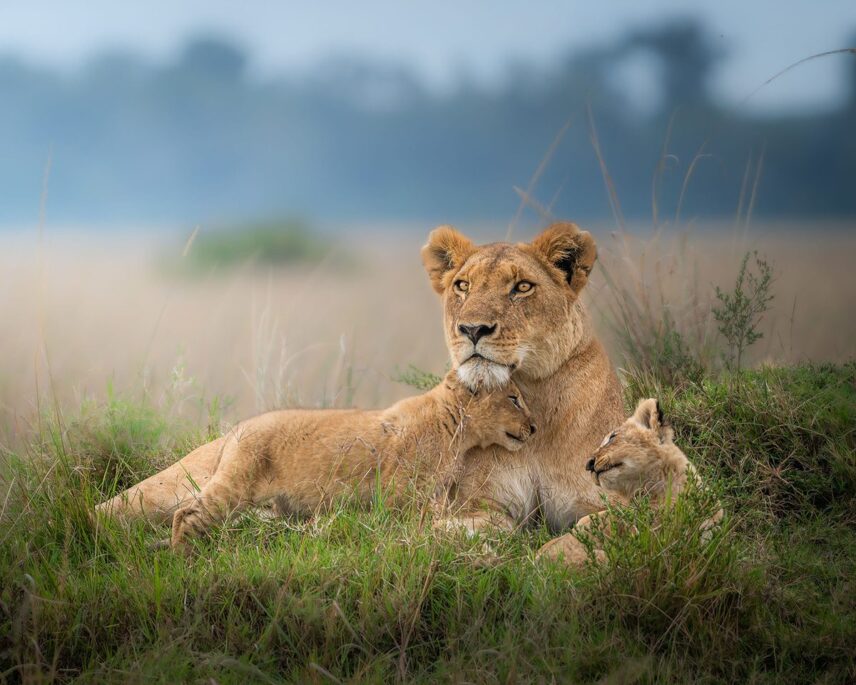
1. LION
Tanzania has more lions than Kenya, South Africa, Botswana, Zimbabwe and Namibia combined. Serengeti National Park alone has over 3,000. When you travel on safari with Thomson, you’re guaranteed a lion sighting–and given that a lion’s roar can be heard from up to 5 miles away, there’s a chance you’ll hear one first!
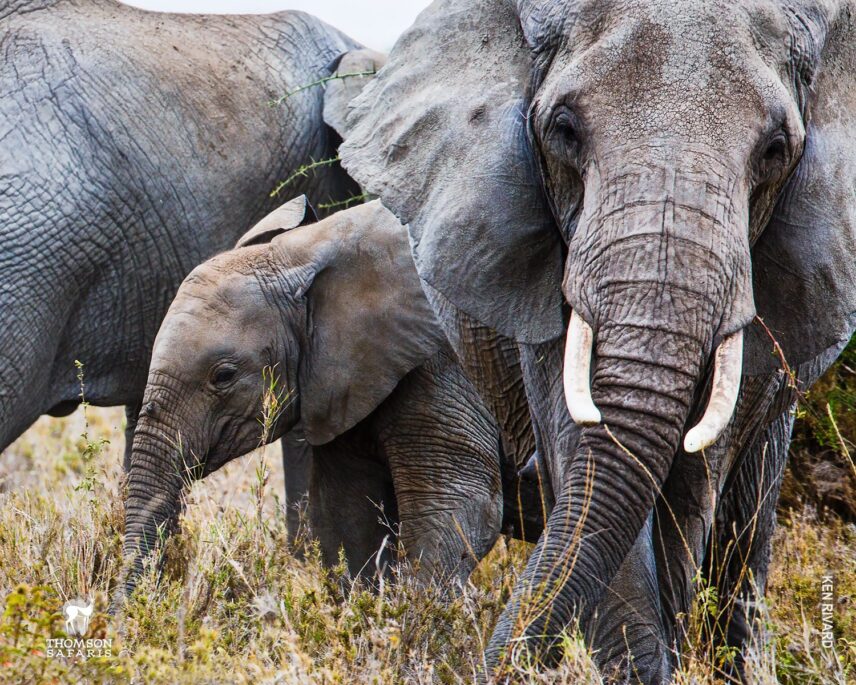
2. ELEPHANT
Elephants are a keystone species, which means their natural behaviors are essential to maintaining the eco-system in which they—and all the other wildlife of the savanna—live. They’re the largest land mammal on earth and as they lumber across the plains consuming shrubs and small trees on the plains, they create the perfect environment for grazers and predators alike.
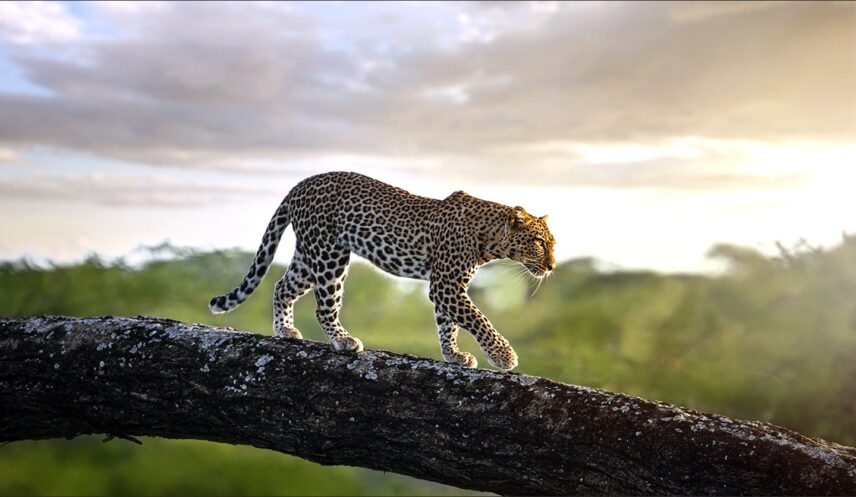
3. LEOPARD
Leopards are some of nature’s greatest athletes, capable of sprinting 36 mph, leaping 20 feet in a single bound, and hauling prey nearly twice their own bodyweight high into a tree. Given their nocturnal and solitary nature, you’re more likely to see them resting high in acacia trees during your Thomson safari.
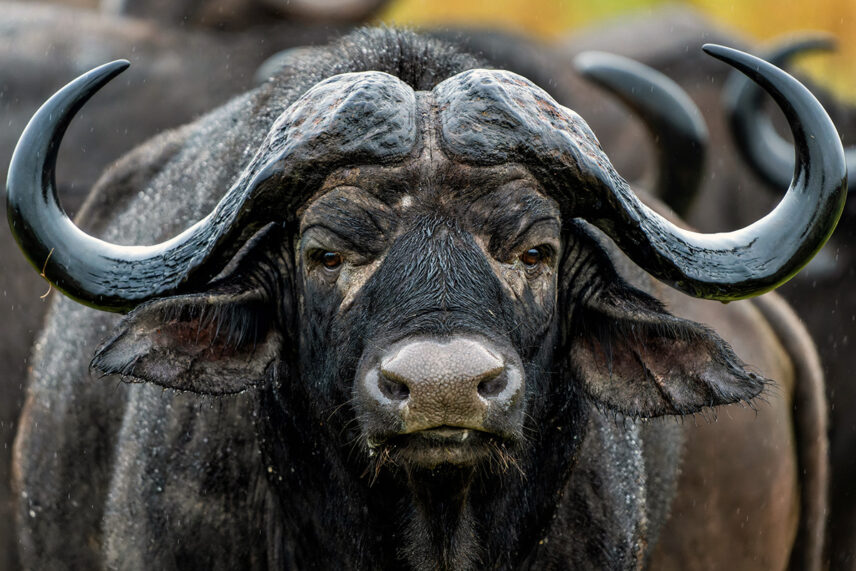
4. AFRICAN BUFFALO
Weighing up to 1 ton and distinguished by their mustache-curl horns, African buffaloes are perhaps the most underrated of the Big Five safari animals. Their society is hierarchal: dominant herds surround themselves with “layers” of subherds of lower-ranking buffaloes. Their society is also democratic: female buffaloes “vote” on a travel direction by sitting and facing it. After an hour of shuffling, they’ll travel in the elected direction!
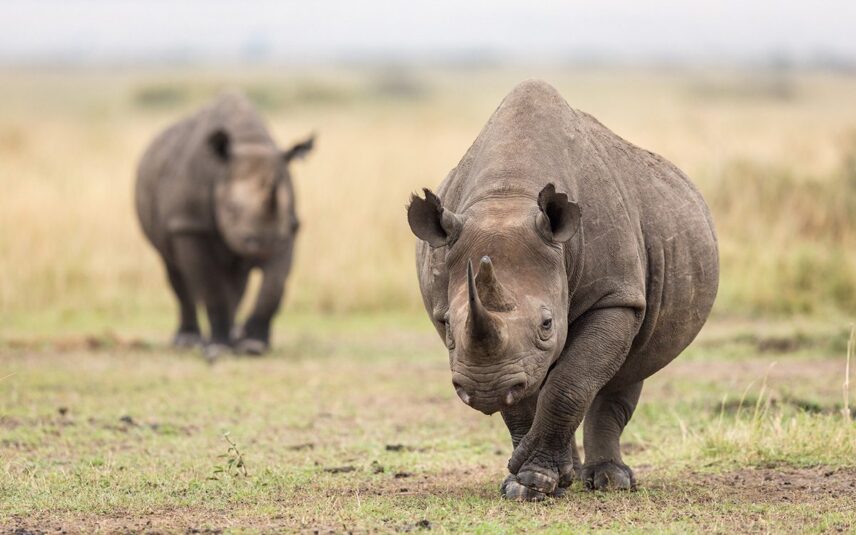
5. RHINOCEROS
Millions of years ago, rhinos were the most common land mammals in North America–yes, North America! Today, rhinos are only found in Africa and southern Asia. Unfortunately, only about 5,000 black rhinos remain in the wild due to poaching. Your best chance to spot one is in the southern Serengeti or Ngorongoro Crater.
hERBIVORES
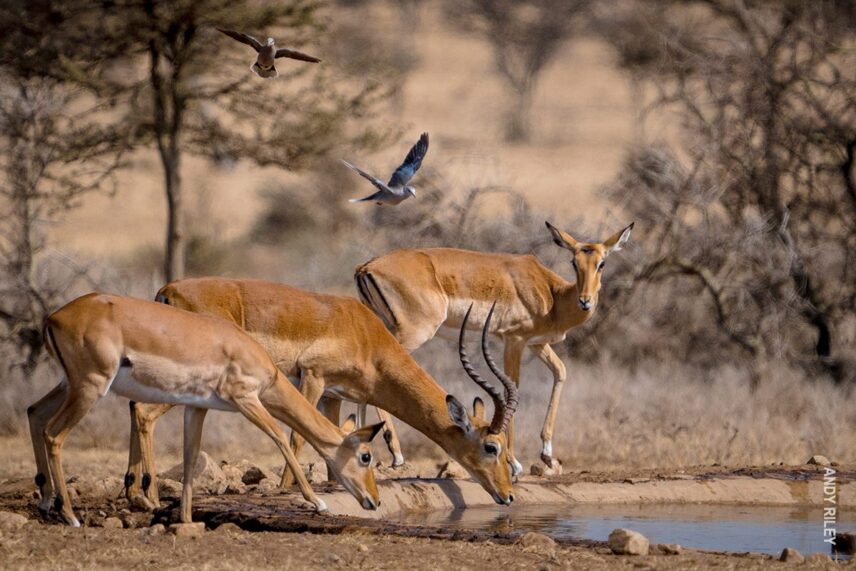
6. ANTELOPE
Strictly speaking, antelope is not a species—it’s a catch-all term for some of the savanna’s most populous ruminants, one of which is the wildebeest. Many species, like the Thomson’s gazelle, are incredibly fast, capable of darting from predators at up to 50 miles per hour. On safari, you’ll spot the entire gamut of antelopes from the smallest—the dik-dik—to the largest—the eland—and many others in between!

7. GIRAFFE
Giraffes are the tallest mammals in the world, averaging around 18 feet high. This height makes it easy to graze on leaves in tall trees, but there’s a downside; their lanky build makes it difficult to bend down for water and leaves them in a vulnerable stance when they drink. Fortunately for them, they can store water for as long as three weeks, which means they don’t need to drink very frequently.
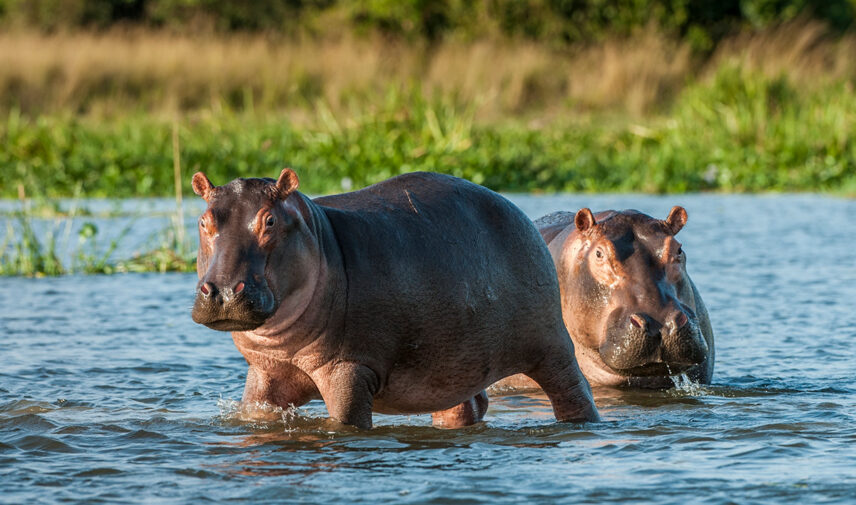
8. HIPPOPOTAMUS
Known to ancient Greeks as the “horse of the river,” hippopotamuses love to soak. They spend about 16 hours every day in the water and these enormous herbivores only leave to graze. They won’t come back until they’ve eaten about 80 pounds of grass!
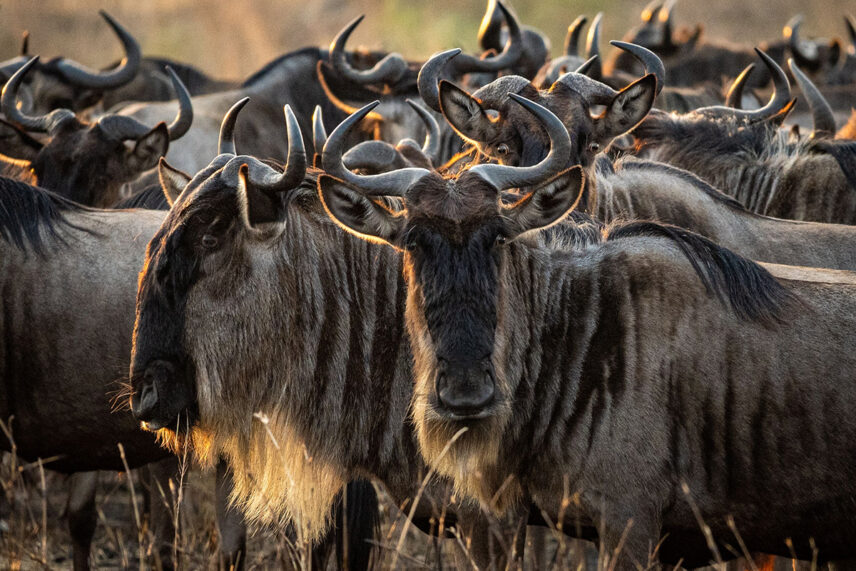
9. WILDEBEEST
Wildebeests are the most common antelope in Tanzania–and they’re the glue that holds the Serengeti together. During their year-round migration, some 1.5 million wildebeests roam across the plains in pursuit of fresh grass and good water. Through grazing, they reduce the risk of wildfires and make it possible for new, diverse plants to thrive.
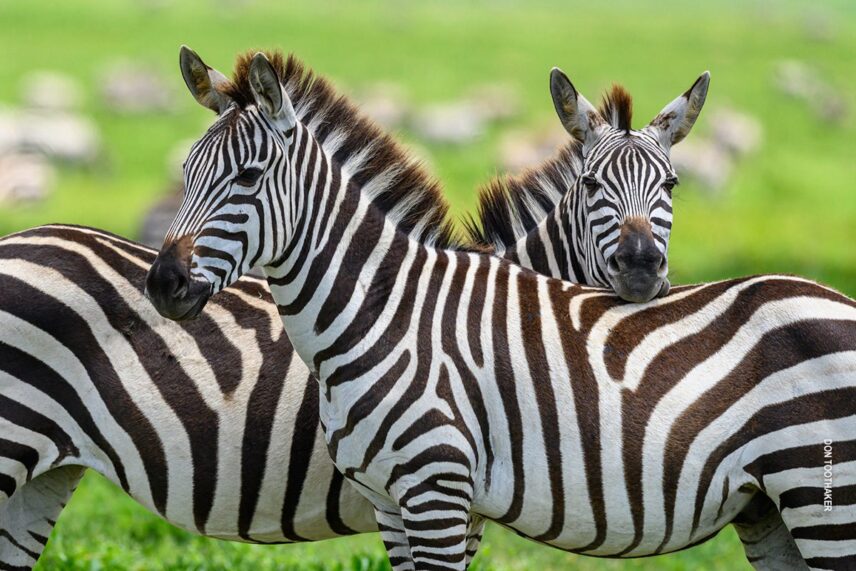
10. ZEBRA
With over 300,000 zebras in Tanzania–about 40% of Africa’s total zebra population–these four-legged Rorschach tests dazzle with their stripes (as unique to them as fingerprints are to us). In the Serengeti eco-system, zebras roam the plains alongside wildebeest and gazelle, following the patterns of the Great Migration.
Predators
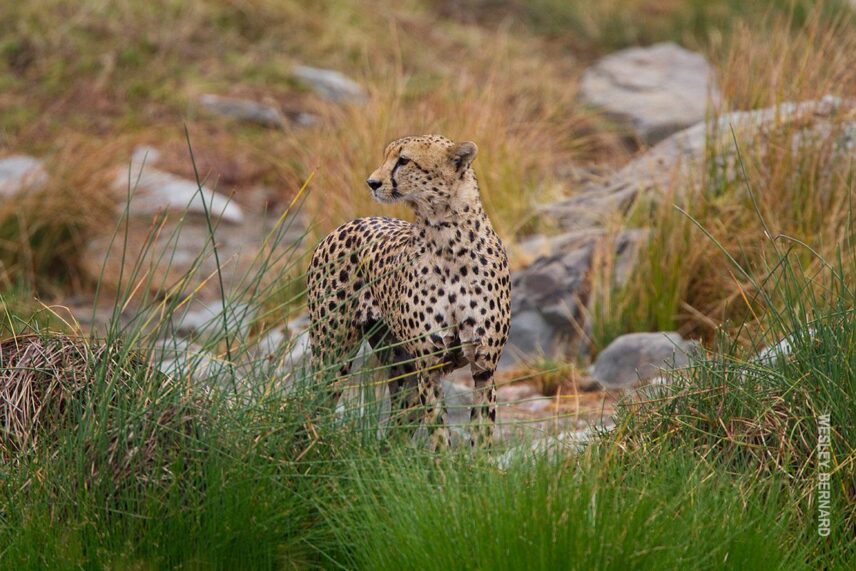
11. CHEETAH
Capable of speeds of up to 70 miles per hour, cheetahs are renowned as the world’s fastest land animal–but how they love to laze! Unlike other predators of the savanna, cheetahs hunt morning and evening—not at night—so in the heat of the day, they’re usually basking in the sun, resting until the next hunting opportunity arises.
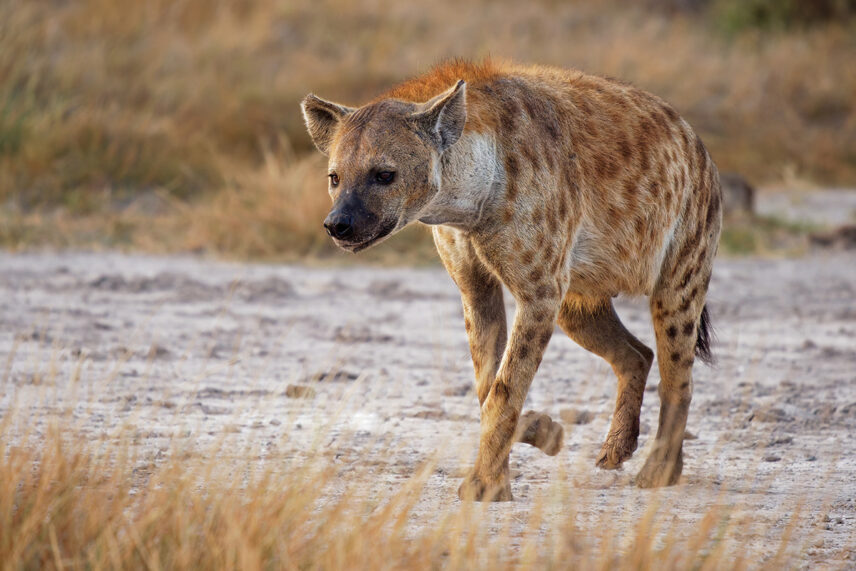
12. HYENA
Despite their reputation as scavengers, hyenas hunt and kill most of their food—then eat it entirely, ravenously, bones and all. During the day, you’ll spot these safari animals moving in coordinated clans through the Serengeti and Ngorongoro Crater. You might hear their iconic cackle at night.
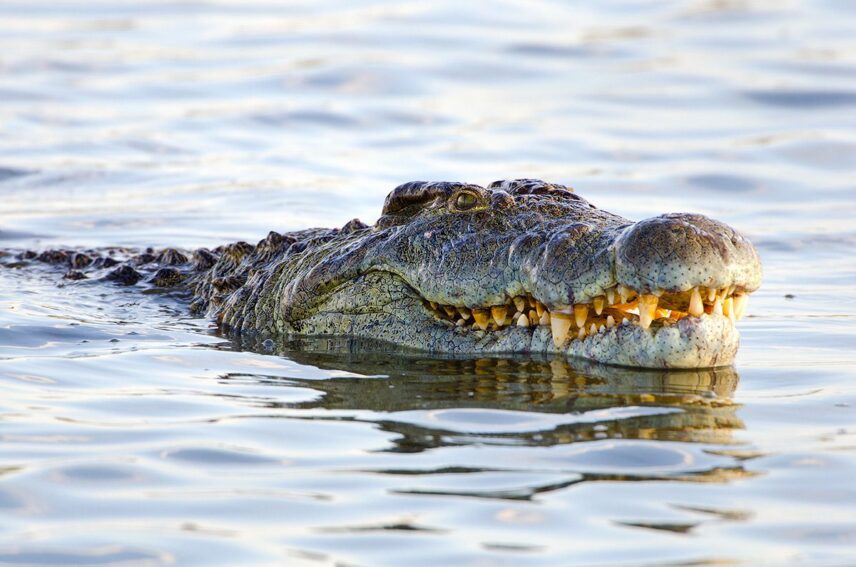
13. CROCODILE
You’ll find these long-snouted, scaly-skinned, cold-blooded reptiles lurking along Tanzania’s rivers, waiting for a wildebeest snack to come to the water’s edge. Their camouflage works so well that wildebeest have no idea they’re even there until it’s too late. If not for your guides, there’s a good chance you’d also mistake a crocodile for a partially submerged riverside rock!
Birds
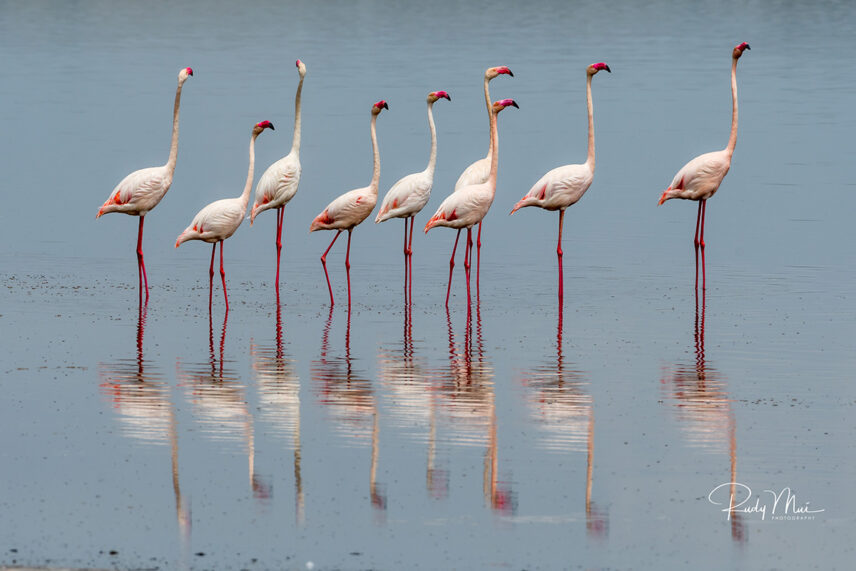
14. FLAMINGO
What makes a flamingo pink? In a word, diet: lesser flamingos eat blue-green algae, which turns them bright pink. Greater flamingos have a more balanced diet of algae, crustaceans and midges, which gives them a paler pink color. You can see flamingos year-round in Tanzania, but you’re likelier to see large flocks of flamingos September through April.
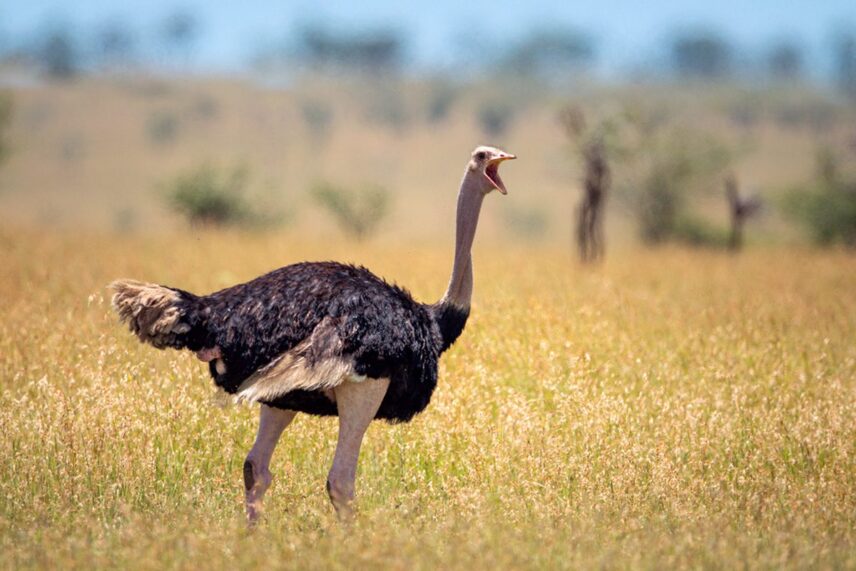
15. OSTRICH
With long, strong legs that can cover more than 10 feet in a single stride, it’s no surprise that ostriches are the fastest birds on land–they’re also the biggest and heaviest birds anywhere. Their adorable chicks grow up fast; they grow nearly one foot in height per month!
AND MANY, MANY MORE!
This list hardly scratches the surface of all the incredible animals you’ll see in Tanzania. Our safari consultants are here to help you craft your dream adventure. Get in touch today!
